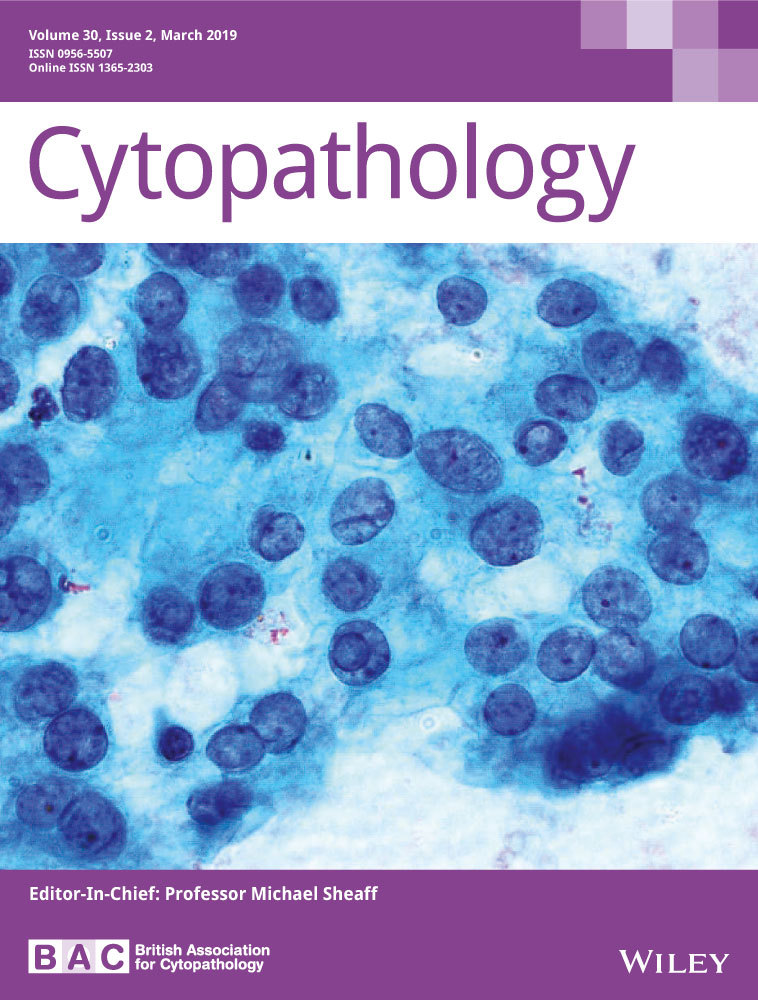Cytopathological results of initial endoscopic ultrasound-guided fine needle aspiration for primary mass and prognosis in pancreatic cancer patients
Abstract
Objectives
Clinical outcomes remain unclear in patients suspected of having pancreatic cancer with indeterminate endoscopic ultrasound-guided fine needle aspiration (EUS-FNA) results. This work aimed to investigate the prognosis of pancreatic cancer patients with indeterminate findings at initial EUS-FNA.
Methods
Findings in all patients who underwent EUS-FNA for suspected pancreatic cancer between 2008 and 2015 at the National Cancer Center, Korea, were retrospectively reviewed. A final diagnosis of pancreatic ductal adenocarcinoma was based on pathology reports.
Results
Of the 144 patients evaluated, 113 (78%) were diagnosed as being positive/suspicious for malignancy on cytological evaluation and 31 (22%) as having atypia/negative/non-diagnostic findings at initial EUS-FNA but subsequently diagnosed with pancreatic ductal adenocarcinoma. Tumour size, clinical stage and treatment modalities did not differ significantly between these two groups. Median overall survival was significantly shorter in patients diagnosed (11.3 ± 0.74 months; 95% confidence interval [CI], 9.4-12.8 months) than non-diagnosed (16.9 ± 2.34 months; 95% CI, 12.0-17.4 months) on initial EUS-FNA (P = .024). Multivariate Cox regression analysis showed that a non-diagnosis on initial EUS-FNA was independently associated with better overall survival (hazard ratio, 0.58; 95% CI, 0.38-0.88; P = .011).
Conclusions
Non-diagnostic results on initial EUS-FNA of a primary mass may be associated with better prognosis in patients with pancreatic cancer.
Abstract
Clinical outcomes remain unclear in patients suspected of having pancreatic cancer with indeterminate endoscopic ultrasound-guided fine needle aspiration (EUS-FNA) results. Our work shows that the prognosis of pancreatic cancer patients can be predicted by indeterminate findings at initial EUS-FNA
CONFLICT OF INTEREST
None.




